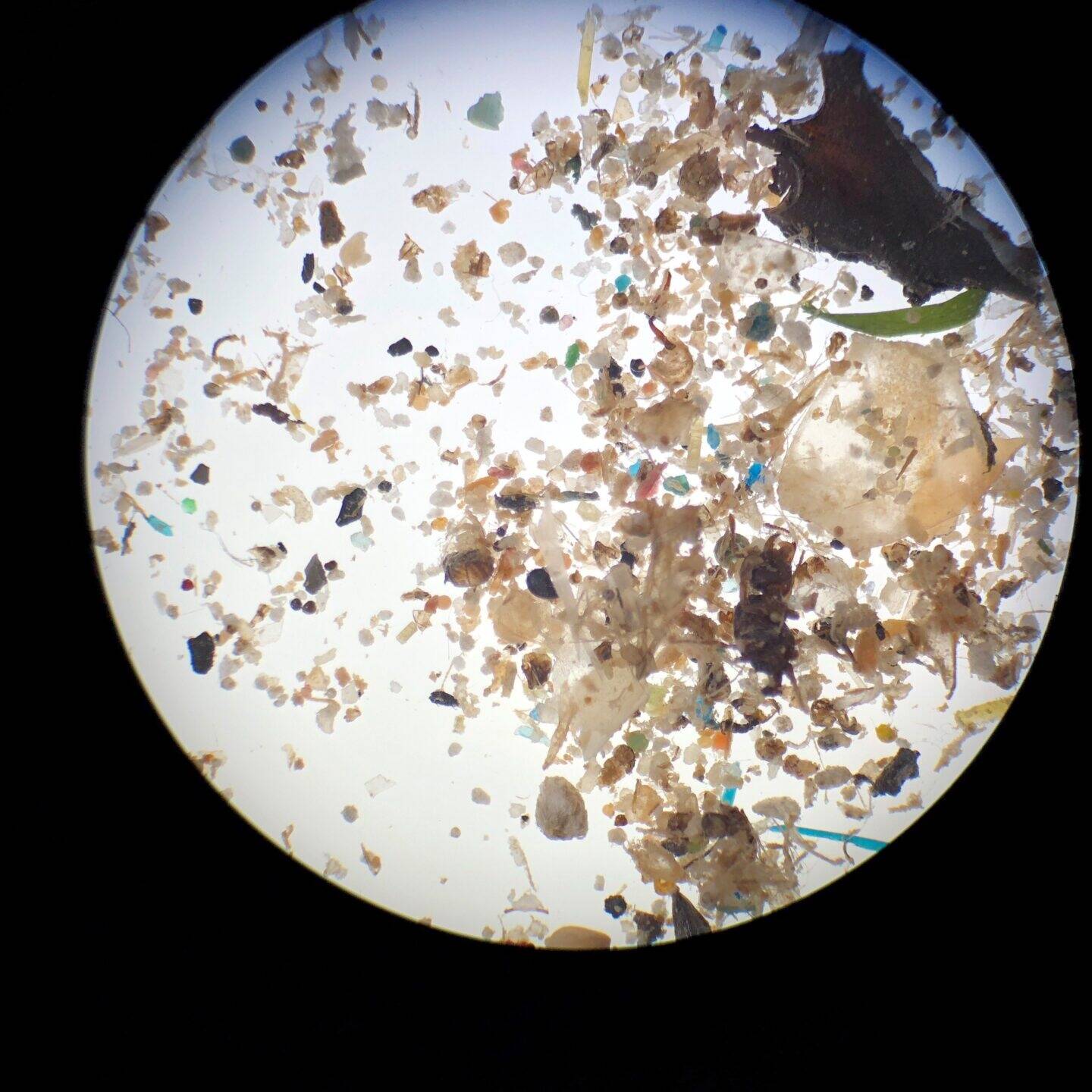By Russel Barsh
Kwiaht
Twenty years ago, then-governor Christine Gregoire launched a campaign to “clean up Puget Sound” that focused on the use and discharge of toxic products such as pesticides and creosote in wetlands, streams and seashores. More recently, however, public concern has shifted to “microplastics”. Exactly what are microplastics, and what is their impact on the marine environment—and on us?
“Plastic” is a general term for hundreds of different chemical compounds. Plastics are polymers: chains of repeating small chemical units. There are naturally-occurring polymers such as cellulose and starches, which are polymers of simple sugars. Fast-degrading polylactide plastics (PLA) used in disposable spoons and forks are manufactured from sugars and starches; bacteria are well adapted to feed on them. Most families of synthetic plastics are manufactured from petroleum or natural gas, although they could also be manufactured from renewable biological hydrocarbons.
Polyethylene (PE), polypropylene (PP), and polyester (mainly PET and PBT) comprise about two-thirds of global plastic production today. They share three important characteristics. As “thermoplastics” they get soft when heated, and can easily be recycled by melting and re-molding. In their purest form, before the addition of plasticizers, hardeners, or coloring agents, they are composed simply of carbon, oxygen, and hydrogen. With the help of bacteria, PE and PP gradually break down in soils and sediments into carbon dioxide and water. (PET contains cyclic hydrocarbons that are more resistant to bacterial degradation.)
Lastly, most species of PE, PP and PET plastics are no denser than water, so they float; other plastics are heavier than water and they sink. Polystyrene (PS) (“Styrofoam”) only floats if it is blown up with air like popcorn. Accordingly, most of the bits and pieces of plastic traveling the seas are PE, PP, PET, and blown PS packing peanuts and foam cells.
In a dynamic environment such as a seashore, plastics break up into smaller and smaller fragments long before they decompose chemically. Most “microplastics” are too small to see without a microscope, and have to be the size of bacteria—a few thousandths of a millimeter—before they can squeeze in between the cells in our lungs or stomachs if we are exposed to them.
Microplastics are already everywhere, and because they are very small, we encounter them as some of the dust in the air we breathe. Likewise, they settle everywhere, on soils, food and water, so that much of what we eat and drink has very small amounts of microscopic plastic dust.
Contrary to the message conveyed by recent campaigns targeting plastic bags, plastic straws, and water bottles, the most common and widespread source of microplastics on our planet is synthetic clothing – that is, clothing manufactured from spun fibers of plastics such as polyester, nylon, acrylic, and spandex. Plastic fibers break up into smaller bits during wearing and washing, spreading around us like dandruff as we stroll and play, and getting flushed into septic systems, sewers and storm drains. They also persist longer in the environment than PE or PP plastics, hence they accumulate more rapidly.
Surprisingly, the physiological impacts of exposure to microplastics in the air, food and water are largely still unknown. Exhaustive reviews of the scientific literature as recently as 2022 could find no conclusive evidence of links between microplastics and health concerns such as cancer or reproductive anomalies. This does not mean that inhaling or ingesting microplastics is “safe”; although it does suggest that well-understood threats to humans and wildlife, such as pesticides, detergents, and pharmaceuticals, should not yet yield the spotlight to microplastics.
In fact, one of the best arguments for reducing plastics in the environment is their tendency to adsorb toxicants such as PCBs and pesticides, and then transport them around the ocean. Microplastics in the marine environment may not be toxic or harmful in themselves, but serve as vectors for mobilizing and dispersing toxicants that would otherwise end up entombed in sediments. This effect is very difficult to measure or confirm, naturally, but it would seem that reducing microplastics should enhance our efforts to reduce and sequester chemical compounds in the oceans that we already know are harmful.
Scientists and engineers agree that the only effective way of reducing microplastics in the environment is “source control”: that is, manufacturing and using less plastic, and disposing of the plastics we do use in a safe manner: recycled or buried.
In light of what we know about sources of microplastics in the environment, the single most important thing we can do to reduce our microplastic footprint on the environment is to wear only natural fibers such as cotton, flax, and wool. Perhaps that is less fashionable than picking bottles off beaches, but the results, in terms of plastic dust in the air we breathe and water we drink, will be far greater.
At the same time, there is a danger that focusing on plastic in the environment distracts us from dealing with the toxic products that are sold in plastic containers, such as pesticides, herbicides, detergents and lubricants. We need to prioritize actions to reduce our use and disposal of what’s inside the containers!
—-
Russel Barsh is director of the conservation biology laboratory Kwiaht, which includes minimizing plastic trash, and finding safer alternatives to toxic reagents, in planning research projects.




